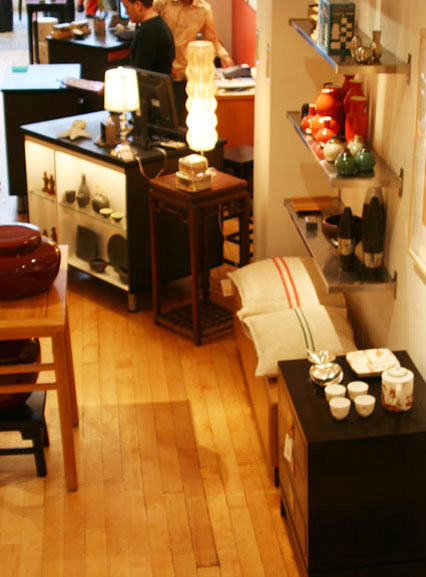

 |
The story of Big Pagoda is one of inevitability and growth. The owner and motivating force behind Big Pagoda , Kurt Silver, spent more than ten years in China, where he was captivated by classic Chinese design in architecture, furniture, and artifacts. What interested him most was the sculptural quality of the objects of everyday life - chairs, tables, cabinets. The clean lines, the meticulous joinery, the understated use of ornamentation, the respect for the patterns in the grain of elm and oak. Out of Silver's desire to share his passion for the integrity and seeming simplicity that is the essence of Chinese design, Big Pagoda was born. He began in 1997 importing antique furniture he discovered in North China bazaars and markets and from private collectors. Not content to rely on the success of his twice-yearly hunting trips, he found a furniture maker near Beijing who employed craftsmen schooled in the classic ways of cabinetry. Thus began Big Pagoda's Classic Design Collection, using traditional materials crafted and assembled in traditional ways. The chests and tables he brought to San Francisco were radically different from the highly decorated and lacquered chinoiserie pieces that so often come to mind when one thinks of "Chinese furniture." Big Pagoda has quite a different story to tell. The gallery on San Francisco's Fillmore Street established itself with a clientele attuned to these newly minted classics. Soon, Silver began supplying a select few other purveyors - namely Gump's in San Francisco and Harrod's in London - with some of the larger pieces: regal apothecary and wedding cabinets whose scale suggests the influence of the Forbidden City itself. Buoyed by the response both to the antiques and the classic pieces, Big Pagoda expanded its vision to include contemporary versions of traditional Chinese design. Thus, the Contemporary Collection was established, and the first pieces, the ZenBox, C3 Box, and the YY Box, became instant successes. These modern storage box/cabinet/tables are directly descended from traditional apothecary chests and wedding cabinets, but in modern colors and scale. Whether traditional or contemporary, Big Pagoda designs remain true to the essence of traditional Chinese furniture - the sense of proportion, the integrity of the materials, and the joy expressed in the artisan's work. Big Pagoda retains its own designers, or works closely with artists and artisans who share its vision. A gallery in every sense, it sponsors a regular series of showings of some of the brightest painters, sculptors, and other visual artists from both sides of the Pacific. A visitor to the Pagoda may open the doors of a Ming-style cabinet and discover a monitor playing a piece of video sculpture. Silver's response would be, "We just try not to be dull." |